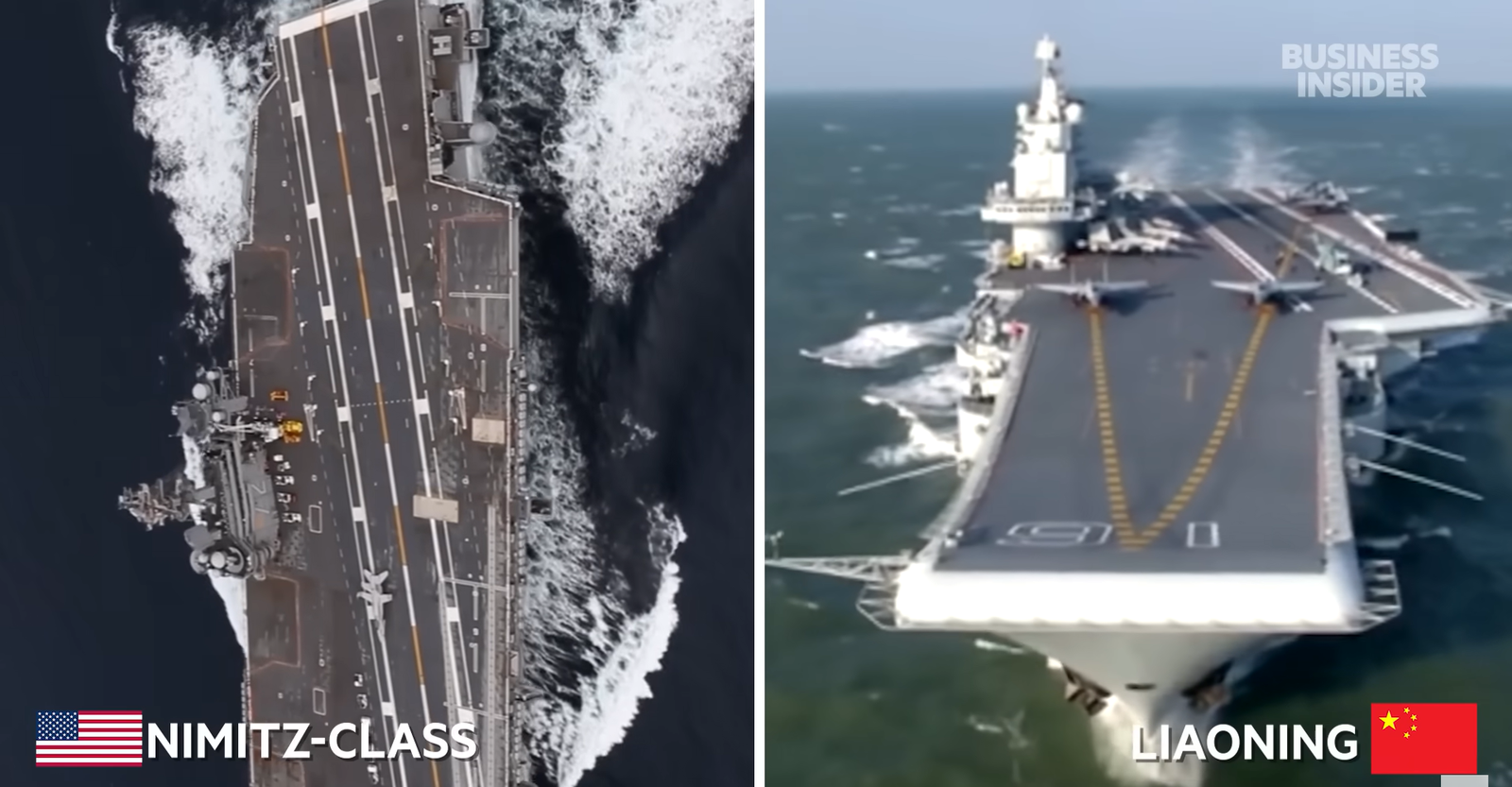In the high-stakes game of military posturing between global powers, few assets command as much prestige and projection of strength as the formidable aircraft carrier. US aircraft carriers are one of them, being the reason for the country’s long standing naval dominance. However, China, with its rapidly modernizing military and growing ambitions, is pouring resources into catching up, setting the stage for a riveting arms race on the high seas.
US Aircraft carriers fleet
At the heart of US aircraft carriers has the awe-inspiring Nimitz-class carriers, nuclear-powered behemoths capable of carrying up to 70 aircraft and serving as floating airports and command centers. These vessels, supplemented by the cutting-edge Gerald R. Ford-class, represent the pinnacle of carrier technology, boasting transformational capabilities like enhanced sortie generation rates and state-of-the-art weaponry.

Chinese Aircraft carriers fleet
In contrast, China’s carrier force is still in its initial stages, with the Liaoning and Shandong serving as its operational backbone. While impressive in their own right, these refurbished and domestically produced vessels lack the technological sophistication of their US aircraft carriers counterparts, relying on less advanced steam-powered propulsion and ski-jump take-off systems.
However, China’s third carrier, the Fujian, currently undergoing sea trials, is poised to be a significant leap forward, touted as the nation’s first truly modern aircraft carrier. Still, even this formidable vessel is expected to lag behind the cutting-edge capabilities of the Ford-class, a sobering reminder of the vast technological gap that still separates the two naval juggernauts.
Importance of Aircraft Carriers
The strategic importance of aircraft carriers cannot be overstated. US aircraft carriers have the floating fortresses that have been instrumental in projecting power. China, on the other hand, views its burgeoning carrier fleet as a critical component in asserting its maritime claims in the hotly contested Asia-Pacific region, particularly in the South China Sea and the Taiwan Strait.
Yet, as both nations continue to invest staggering sums into their carrier programs, a fundamental question arises: Are these massive Chinese and US aircraft carriers truly worth the expenditures in an era where advanced anti-ship missiles and other standoff weapons pose an existential threat?
The reality is that aircraft carriers remain indispensable assets for power projection against less-sophisticated adversaries. But their role in a potential high-intensity conflict between the U.S. and China may be more nuanced. In such a scenario, stealthier assets like submarines and fifth-generation fighters may take the lead, relegating carriers to a supporting role in the initial phases of combat.
Read More:- Namibia’s Flourishing Oil Reserves: A Promising Prospect Amidst Cautious Optimism
Conclusion
Nonetheless, the symbolic value and prestige associated with these Chinese and US aircraft carriers cannot be understated. As China continues its relentless pursuit of military parity, the aircraft carrier race with the US air carriers fleet will likely intensify.
In the ever-evolving realm of modern warfare, the Chinese and US aircraft carriers of the seas remain integral to both nations’ strategic calculus, serving as potent reminders of their superpower status and unwavering commitment to maintaining maritime dominance in an increasingly contested global arena.
Explore the world of anime. Visit Pop Media Pulse
